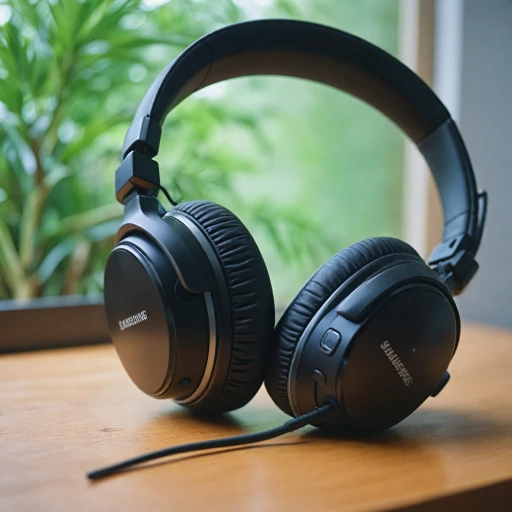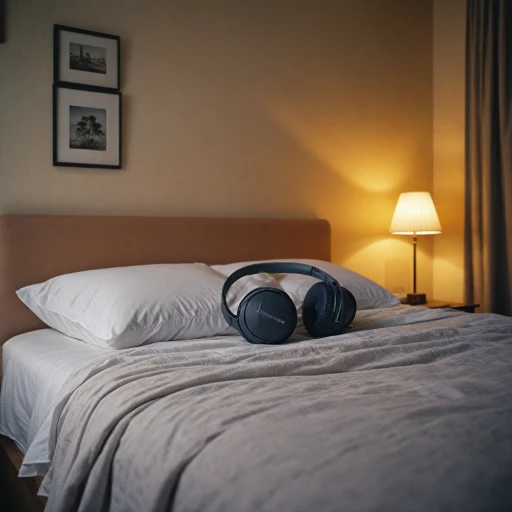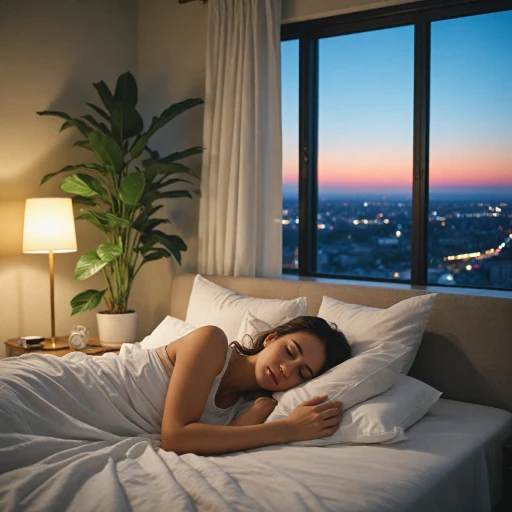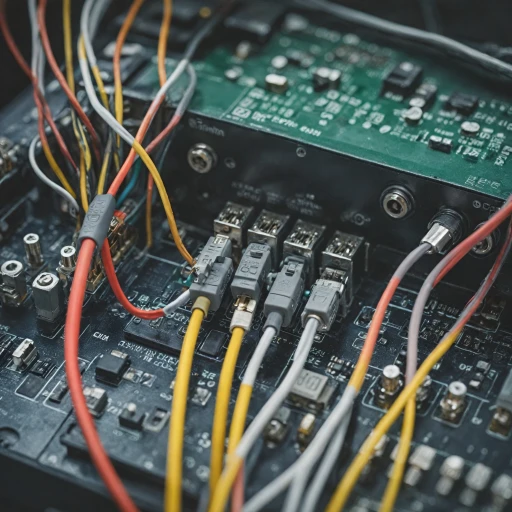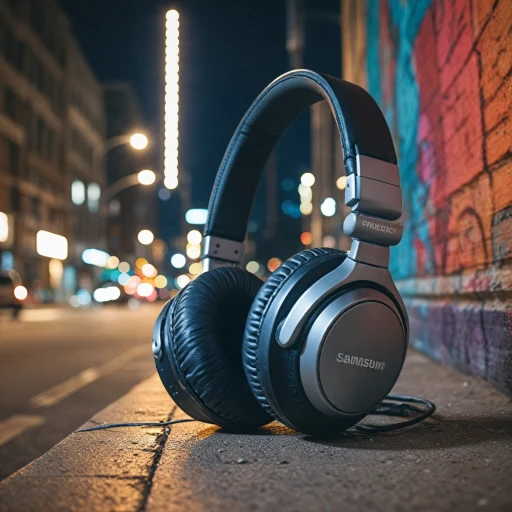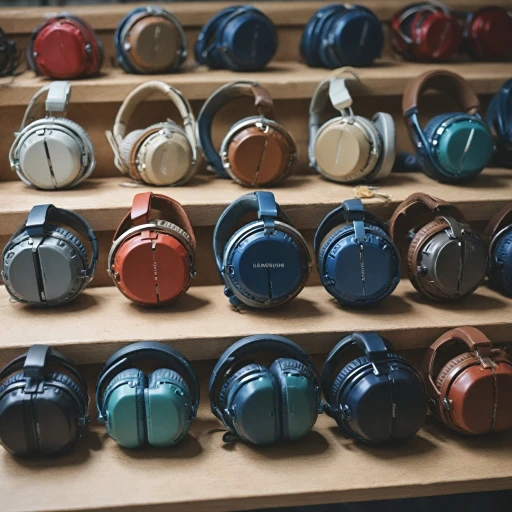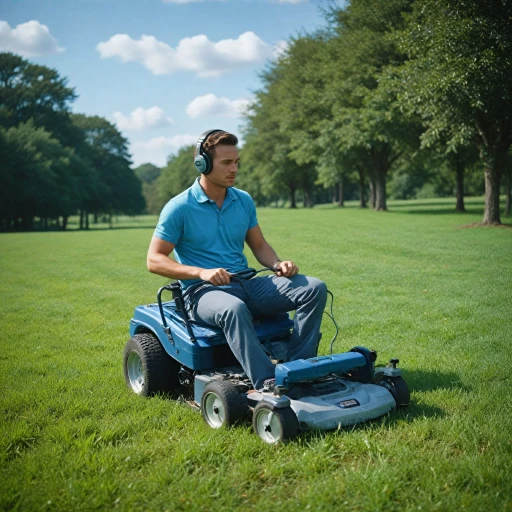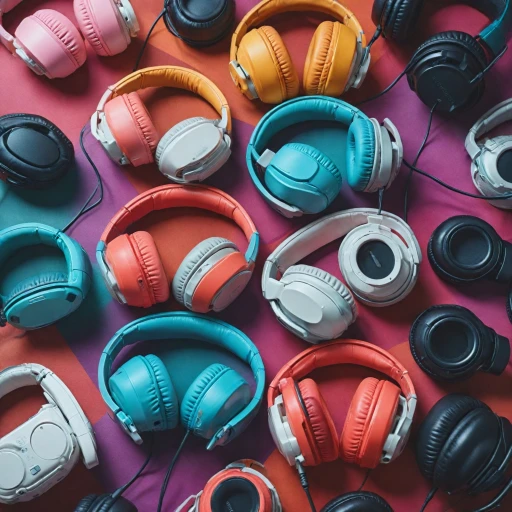
How Noise Cancelling Technology Works
The Science Behind Noise Cancellation
At its core, noise canceling headphones employ ingenious technology to reduce unwanted background sound, enhancing your audio experience. The concept hinges on two main types of noise management: active and passive noise reduction. Passive noise reduction relies on the physical design of the headphones to block external sounds. This typically involves well-cushioned ear cups that effectively shield your ears from high frequencies. On the other hand, the enigmatic act of active noise cancellation (ANC) is where the true magic happens.
ANC technology uses sophisticated systems consisting of integrated speakers and microphones to intercept and cancel out external noise. These ANC systems detect ambient sound waves—think of crowdy city streets or the distracting hum of an airplane cabin—and produce an inverse sound wave (also known as antiphase) to neutralize the unwanted noise. The result is an almost serene listening environment, leaving you immersed in your music or other audio content without distraction.
One might wonder how such a process can be consistently reliable. Advanced active noise control systems are built around complex algorithms that adjust in real time, adapting to varying levels and types of noise. As you examine various noise canceling headphones on the market, consider the effectiveness of the ANC system, as it can vary significantly between models, affecting the overall listening experience.
Moreover, understanding the limitations and challenges of noise-canceling headphones is crucial. Certain high-pitched or abrupt sounds may not be entirely masked by current technology, a topic explored further in subsequent discussions. Nonetheless, the ongoing evolution in this field suggests promising future trends that may address these challenges.
For those with specific concerns on how noise canceling headphones may fit, especially larger head sizes, it's beneficial to find the perfect fit through a proper guide. For more tips on finding comfortable options, explore this guide.
Benefits of Using Noise Cancelling Headphones
The Benefits That Will Make You Want Noise Cancelling Headphones
Investing in noise cancelling headphones offers several advantages that can significantly enhance your audio experience. This technology is particularly effective for those who desire immersive music sessions devoid of internal or external distractions.- Enhanced Audio Experience: Noise cancelling headphones deliver superior sound quality by minimizing external noise, allowing you to enjoy your music and audio content without unnecessary interference. The active noise control (ANC) system uses external speakers to cancel unwanted background sounds, providing a more focused auditory experience.
- Improved Concentration: Whether you are working in a bustling office or studying in a noisy café, these headphones help reduce background noise, improving concentration and productivity. This is especially beneficial in environments where reducing unwanted background sound is crucial for effective work or study sessions.
- Stress Reduction: Exposure to constant loud or disruptive noise can contribute to stress and fatigue. Using noise cancelling headphones can create a peaceful auditory environment, which aids in relaxation and focus on tasks at hand.
- Better Sleep and Rest: For those seeking solace in noisy environments such as airplanes or busy urban settings, noise cancelling headphones can assist in achieving restful sleep by masking low-frequency noise effectively.
- Hearing Protection: Frequent exposure to high decibel levels can damage hearing over time. By investing in noise cancelling headphones, you're not just enjoying sound management but also protecting your ears from harmful noise levels.
Types of Noise Cancelling Headphones
Discovering the Distinct Varieties of Noise Cancelling Headphones
In the realm of sound management, noise cancelling headphones offer a fascinating set of capabilities due to the diverse types available. Whether you're listening to music or simply trying to enjoy some peace, choosing the right type of headphones can drastically enhance the experience.
Active Noise Cancelling (ANC) Headphones
Active noise cancelling headphones are arguably the most modern and effective option for reducing unwanted background noise. They employ an ANC system that uses microphones and speakers designed to produce sound waves that actively cancel the incoming noise. The effectiveness of ANC technology is most pronounced in environments with constant, low-frequency sounds, like an airplane or a car engine. However, this capability often comes at a higher price point due to the advanced technology involved.
Passive Noise Cancelling Headphones
Contrasting with ANC, passive noise cancelling headphones rely on physical barriers to block out background noise. This can involve thicker padding or ear cups that seal tightly around the ear, effectively functioning as a form of sound masking. While they may not be as effective at canceling noise as active systems, they do not require additional power sources or batteries, offering an improved battery life.
Hybrid Noise Cancelling Headphones
For those seeking the combined advantages of both active and passive systems, hybrid noise cancelling headphones are an ideal choice. They incorporate both ANC technology and passive noise barriers, providing a comprehensive approach to noise reduction. This hybrid system allows for better adaptability across different noise environments.
Choosing the right type of noise canceling headphones hinges on understanding your personal preferences and commercial applications. Whether it’s for detailed audio experiences or sound masking during work, each type has its unique benefits and challenges. As you consider your choice, understanding these distinctions is pivotal for effective noise reduction and noise control.
Factors to Consider When Choosing Noise Cancelling Headphones
Key Considerations for Selecting Noise Cancelling Headphones
When embarking on the journey to find the perfect pair of noise cancelling headphones, several factors can significantly impact your decision. Understanding how these elements interplay will not only enhance your listening experience but also ensure you're making a smart purchase.- Active vs. Passive Noise Cancellation: Determine whether you need active noise cancellation (ANC) or if passive noise control is sufficient for your needs. ANC technology employs a system with internal speakers designed to reduce noise by emitting sound waves. On the other hand, passive noise cancellation relies on sound-proof materials to block background noise.
- Sound Quality Preferences: Consider what audio quality means to you. While some users primarily seek effective noise reduction, others prioritize crystal-clear music or voice distinction, even in challenging environments. It's essential to find headphones that balance sound management and fidelity.
- Comfort and Fit: Over-ear or on-ear noise cancelling headphones should offer comfort for extended periods of use. Evaluate cushioning, ear cup design, and adjustability, especially if you use them for commercial applications or long flights.
- Battery Life: Active noise cancellation systems require battery power to operate effectively. Look for headphones with a robust battery life to ensure they won't fail you during crucial moments. Most ANC headphones offer a mix of technology options that balance performance and endurance.
- Price Range: Noise cancelling headphones vary significantly in price. You'll find options from budget-friendly models to premium designs. Consider which features are essential for you and how much you are willing to invest in those capabilities. A higher price doesn’t always guarantee better quality.
- Color and Style: While it doesn't influence the function, the color and design can be an important factor for many customers. Whether you prefer classic black, minimalist white, or a vibrant hue, your headphones can reflect your personal style.
- Additional Features: Look out for added features like integration with virtual assistants, touch controls, and support for high-resolution audio. These can enhance your experience but may add to the overall cost.
Challenges and Limitations of Noise Cancelling Headphones
Overcoming the Hurdles of Noise Cancelling Headphones
Navigating the world of noise cancelling headphones may reveal certain challenges and limitations despite their impressive ability to transform your audio experience. Knowing these can help you make a more informed decision when purchasing your next pair.Price and Budget Concerns
One common concern for many users is the price point of advanced noise cancelling headphones. High-quality ANC systems often carry a premium price, as the technology required to actively reduce unwanted background noise is sophisticated. While there are more budget-friendly options in the market, they might not be as effective in sound management compared to their premium counterparts.Battery Life and Usage
Active noise cancelling headphones rely on their internal systems to effectively manage sound cancellation. This means they require power, often from rechargeable batteries. Users may find battery life to be a limiting factor, especially during extended usage periods. The need to frequently recharge can be inconvenient, especially if you're on long trips where access to power is limited.Sound Quality Versus ANC
Another challenge lies in striking the perfect balance between effective noise cancellation and high-quality audio performance. Some headphones may prioritize noise reduction over music quality, meaning that the richness and fidelity of audio can sometimes be compromised. This balancing act is crucial for an enjoyable listening experience, especially in the realm of music lovers.Fit and Comfort Issues
Achieving optimal noise cancellation requires a snug fit, which can sometimes lead to discomfort, particularly during extended use. Ensuring a proper fit without compromising on comfort is essential but can be tricky, considering the difference in head and ear shapes among users. Trial and error in choosing headphones that offer passive noise isolation alongside active features can mitigate this issue.Limits of Noise Cancellation Technology
Despite the remarkable effectiveness of active noise cancelling technology, it's not infallible. Low-frequency sounds, such as the hum of an airplane engine, are typically easier to cancel than high-frequency sounds, like human voices and sudden loud noises. Additionally, over-reliance on ANC can lead to lesser sound awareness, which can be a safety concern in certain environments. Understanding these limitations will help you make a well-rounded decision when choosing noise cancelling headphones, allowing you to harness their potential without unexpected drawbacks.Future Trends in Noise Cancelling Technology
Emerging Trends and Innovations in Noise Cancelling Technology
As the demand for noise cancelling headphones continues to grow, industry advancements are focusing on improving the technology's effectiveness, user experience, and accessibility. Here are some current and future trends in noise cancellation that are shaping the market:- Enhanced Active Noise Cancellation Systems: Manufacturers are refining active noise cancelling (ANC) systems to better adapt to different environments. This involves improved microphones and processors that more accurately identify and counteract unwanted background noise.
- Integration with Smart Technology: As smart technology becomes increasingly prevalent, noise cancelling headphones are expected to offer better integration with other smart devices. This enhances connectivity and offers users more control over their audio experience, including customization of sound settings and noise control.
- Longer Battery Life: Increased battery efficiency is critical for maintaining effective noise cancellation during prolonged use. New battery technologies aim to extend battery life without compromising the performance of the noise-cancelling features.
- Advanced Sound Management: Future headphones will likely offer more precise sound management options. This could involve sophisticated sound masking features, such as the ability to blend white noise or adjust the intensity of the ANC depending on the user's activity or location.
- Sustainability and Eco-Friendly Materials: As sustainability becomes a priority across industries, headphone manufacturers are exploring materials and production processes that are more environmentally friendly. This includes the use of recycled materials and reducing waste in the production process.
- Adaptive Sound Environments: With the ongoing advancements in AI and machine learning, future noise cancelling headphones might automatically adjust to different soundscapes. Whether in a busy city or a quiet office, the system could actively learn and adapt to ensure optimal audio performance.
- Broadening the Price Range: Currently, high-quality noise cancelling headphones can be expensive. However, as the technology advances, it's expected that more affordable options will become available, making effective noise cancellation accessible to a wider audience.


